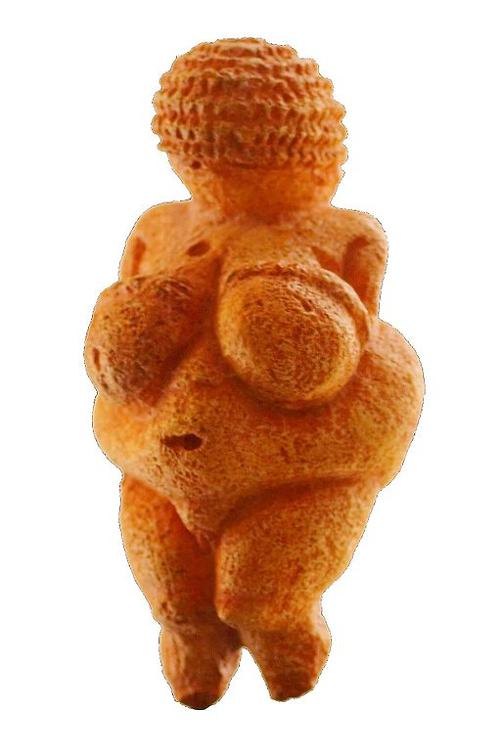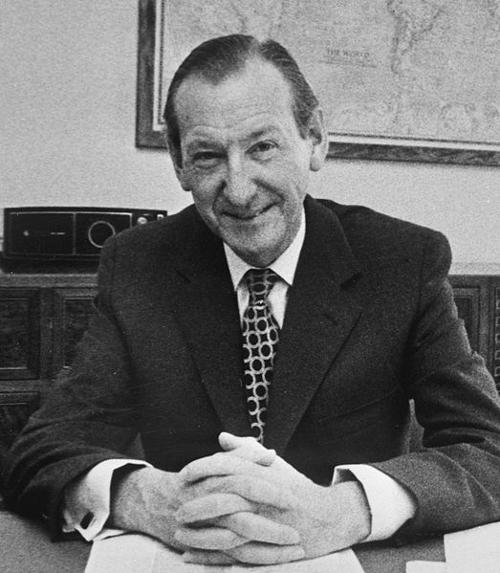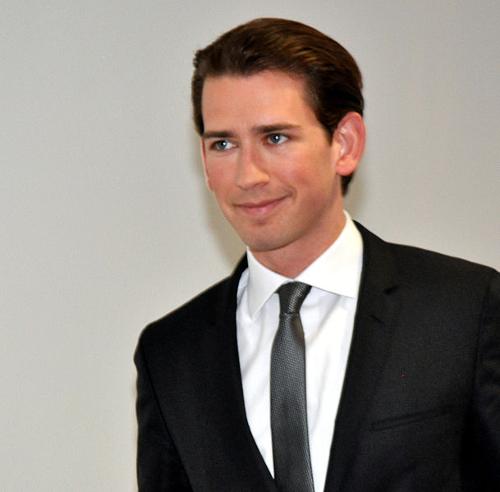AUSTRIA
History

History

Cities in AUSTRIA
| Vienna |
History
Pre-history and early history
 Venus of WillendorfPhoto: MatthiasKabel CC 3.0 Unported no changes made
Venus of WillendorfPhoto: MatthiasKabel CC 3.0 Unported no changes made
The first traces left by humans date from about 20,000 years ago. Some petroglyphs and figurines, e.g. the Venus of Willendorf, testify to their presence. They lived in caves and mud huts and lived off hunting and some ranching. From 1000 BC. Illyrians and Celts settled in present-day Austria, the Illyrian-Celtic period. Important in that period was the emergence of the Hallstatt culture that worked iron for the first time. In the first century BC. the area was subdued by the Romans, who thereby extended their northern border to the Danube. They divided the area into three provinces, built roads, and established border posts and trade settlements. One of those genealogies was called Vindobona, the current capital of Vienna. After the fifth century, the Western Roman Empire fell and Huns, East Goths, Longobards and other Germanic tribes invaded the country. Christianization also got off to a good start and the diocese of Salzburg was made archdiocese in 798.
Franks and Babenbergers
 Charlemagne, AustriaPhoto: Beckstet CC 3.0 Unported no changes made
Charlemagne, AustriaPhoto: Beckstet CC 3.0 Unported no changes made
Under Charlemagne, Austria became part of the Frankish Empire and in 791 the Ostmark (the Vienna region) was founded. In the ninth century the Hungarians invaded Austria, but were again defeated in 955 by Otto I. In 996 the name Ostarrichi first appeared in an imperial charter. This name applied to the area around St. Pölten. The area was dominated by the Babenberg family around that time. The Babenbergers continued to expand their area, as far as Vienna. The last Babenberger was killed in 1246.
The Habsburgers come into the picture
 Tombstone Rudolf I of Habsburg, AustriaPhoto:Linsengericht CC 3.0 Unported no changes made
Tombstone Rudolf I of Habsburg, AustriaPhoto:Linsengericht CC 3.0 Unported no changes made
Until 1272 there was a fight for the succession of the Babenbergers. In 1273 Rudolf I of Habsburg was appointed German king by the royal princes. Rudolf defeated Ottokar II of Bohemia in 1278 and with his possession this was the beginning of the Habsburg "Hausmacht" which meant increasing own possessions apart from German kingship. In 1373 Tyrol fell to Habsburg. Divisions, brother disputes, rebellious peasants and the plague weakened the Habsburg dynasty from within. Since 1438, the year in which Albrecht V was elected king of the Holy Roman Empire, the uninterrupted Habsburg succession began until 1806. Albrecht's successor, Friedrich III, became the first Austrian Emperor of the German Empire. Frederik's son Maximilian married Mary of Burgundy and thus laid the foundation for the heyday of the Habsburg House. Maximilian's son Philip the Fair married Joan of Aragon in 1496 and their grandson Charles the V ruled the Netherlands, Spain, the German Empire and the Austrian hereditary lands in 1519.
 Sarcophagus of Ferdinand I of AustriaPhoto: Jebulon in the public domain
Sarcophagus of Ferdinand I of AustriaPhoto: Jebulon in the public domain
Ferdinand I succeeded Charles V as German emperor in 1556. In Spain, Charles' son Philip II came to power and the Habsburg Empire was split into a Spanish and an Austrian part. In the 16th century, the wars against the Turks and the Reformation are also central. The Turks besieged Vienna in 1529, but the city held out. The Reformation has also caused great unrest since 1520. Lutherans and Anabaptists gained support in all social classes. However, the Catholic faith prevailed and those who did not want to return to the "true" faith were forced to leave the country. Under Leopold I (1657-1705) the Turks marched back to Vienna in 1683. This time, too, the Austrians held out despite great odds.
Under Maria Theresa (1740-1780) and Joseph II (1780-1790), the powerful empire of the Habsburgs stabilized. It was not a real national state but a motley collection of peoples. Joseph II ruled as an absolute monarch who also tried to reform the Catholic Church according to his own ideas. Non-Catholics were also granted freedom of religion and all civil rights. As a result, the influence of the church on public life decreased among the intellectuals as well as among the workers. In Napoleonic times, Austria lost several areas to France. Napoleon then no longer recognized the Holy Roman Empire of the German Nation. That was the reason that Emperor Francis II (1792-1835) called himself Francis I, emperor of his own hereditary lands.
Austrian Empire
 Franz Joseph I , AustriaPhoto: Dguendel CC 4.0 International no changes made
Franz Joseph I , AustriaPhoto: Dguendel CC 4.0 International no changes made
In 1809 Napoleon suffered several defeats, but proved too powerful. He took Vienna and forced Austria to become his ally. This lasted until 1813 when Napoleon suffered a major defeat at Leipzig. At the Congress of Vienna in 1815, Europe was again divided by Austria (led by Metternich), England, France, Russia and Prussia.
Austria took control of Central Europe and much of Italy. In 1848, a time of liberal and national revolutions all over Europe, the weak Ferdinand I (1835-1848) was deposed in favor of Emperor Franz Joseph I, who would rule the empire until 1916. The government under Franz Joseph I was corrupt and uncontrolled. All parts of the empire were controlled very centrally. The church reform of the German emperor Joseph II was also abolished. In 1859 Italian nationalists managed to break free from Austria and in 1866 after a defeat in the war against Prussia (led by Bismarck), Austria's role in German politics was also played out. Because of the defeat against Prussia, Austria again focused on its eastern neighbors. In 1867 the Austro-Hungarian double monarchy was established. Hungary remained sovereign but united with Austria. Franz Joseph I therefore became Emperor of Austria and King of Hungary. The first general election (male only) took place in 1907.
 Car in which Franz Ferdinand was shot, after which World War I broke outPhoto: Alexf CC 3.0 Unported no changes made
Car in which Franz Ferdinand was shot, after which World War I broke outPhoto: Alexf CC 3.0 Unported no changes made
The First World War broke out following the 1914 assassination in Sarajevo of Franz Joseph I's intended successor, Franz Ferdinand. During the war, in 1916, Franz Joseph I died. His successor, Charles I, would be the last to take the Habsburg throne. He wanted to end the war in 1917, but he couldn't. After the lost war, Austria was dissolved.
Republic
 Schuschnigg. AustriaPhoto: Unkown CC 4.0 International no changes made
Schuschnigg. AustriaPhoto: Unkown CC 4.0 International no changes made
Czechoslovakia, Hungary and Yugoslavia became independent. Romania and Italy also collected some leftovers. On Nov. the first Austrian Republic was proclaimed, but Austria was at that time a small, poor country with only seven million inhabitants instead of fifty million. The population wanted to join Germany, but the Allies prevented this in the Treaty of Versailles. Hitler, born in Austria and in power in Germany since 1933, was keen to incorporate Austria (Anschluss). With the help of Mussolini (Italy) they avoided being caught by the Germans. The socialists fiercely opposed this and were imprisoned or murdered. Austrian Nazis seized power in 1934, but failed. Chancellor Dollfuss was killed and succeeded by Kurt Schuschnigg (1897-1977). This lost the support of Italy in 1936 because Mussolini and Hitler became more aligned. In early March 1938, Schuschnigg was put under heavy pressure by Hitler to take the Nazi Seyss-Inquart into the government. Convinced of impending doom, Schuschnigg unsuccessfully sought support from France and England.
World war II and afthermath
 Kurt Waldheim, AustriaPhoto: Basch, Fritz CC 3.0 Netherlands no changes made
Kurt Waldheim, AustriaPhoto: Basch, Fritz CC 3.0 Netherlands no changes made
On March 12, 1938, Hitlers' troops entered Austria and Seyss-Inquart became Reich Stadtholder of Austria, which was henceforth called Ostmark. Thus Austria became involved in the Second World War.
Thousands of Austrians disappeared in camps and prisons. Half of the Jewish population fled, the other half died in World War II. The economic revival at the beginning of the Second World War was short-lived. Hundreds of thousands of men were enlisted and many died. After the war, Austria was occupied by the Russians, French, English and Americans. Vienna was divided into five sectors (one for each of the occupiers, one common). Heavy reparations and free deliveries to Russia paralyzed the economy completely. On May 15, 1955, Austria became an independent and free country again. Due to, among other things, the Marshall aid, expansion of electricity works and industries, growth of trade and tourism, Austria slowly recovered. Chancellor Kreisky (1970-1982) also put Austria back on the international political map. In 1986, Kurt Waldheim, controversial about his war history, became Federal President. Despite great pressure from the United States and Jewish organizations in particular to resign, Waldheim stayed on until 1992.
Austria joins EU
 Schuessel, AustriaPhoto: Kremlin.ru CC 3.0 Unported no changes made
Schuessel, AustriaPhoto: Kremlin.ru CC 3.0 Unported no changes made
After a referendum, Austria joined the European Union on January 1, 1995. On April 16, 1996, the Austrian state abolished a 1919 law prohibiting members of the Habsburg royal family from entering the country until they renounced their claims to the throne. On April 8, 1999, Jörg Haider, the highly controversial leader of the equally controversial far-right Freedom Party (FPÖ), was re-elected governor of Carinthia. On February 1, 2000, the ÖVP and the FPÖ concluded a coalition agreement. After the swearing-in on February 4, foreign sanctions will be launched. For example, the countries of the European Union keep bilateral contacts with Austria to a minimum. On February 28, Haider resigns as party leader of the FPÖ. However, he continues to aspire to the chancellery.
The parliamentary elections in November 2002 yielded a monstrous victory for the conservative Christian Democrats of the People's Party (OVP). Chancellor Wolfgang Schuessel's party won 42.27% of the vote, making it the largest election victory in Austria since 1945. The Freedom Party FPO, the controversial right-wing coalition partner of the OVP in the previous government, only received 10.16% of the vote. That is slightly more than a third of the percentage in the 1999 elections. The Social Democratic SPO obtained 36.9% of the vote and the Greens 8.96%.
21th century
 Heinz Fischer, AustriaPhoto: GuentherZ CC 3.0 Unported no changes made
Heinz Fischer, AustriaPhoto: GuentherZ CC 3.0 Unported no changes made
SPÖ socialist Heinz Fischer became the new president of Austria in April 2004. Fischer defeated his conservative challenger and Secretary of State Benita Ferrero-Waldner.
Fischer was the first socialist head of state in eighteen years. The policy of the previous coalition is broadly continued; the Schüssel II government is implementing a package of reforms that should improve the functioning of the labor and capital markets. The government is committed to savings in the public administration (target 10,000 fewer civil servants in 2006). The pension reforms started in 2004 and will gradually bring about a radical change in the pension system until 2028 (see also 3.5). The first phase of the reforms in the tax system was introduced on January 1, 2004, the second phase on January 1, 2005. With a reduction in corporate tax from 34 to 25% by 2005, the Schüssel government is seeking to improve Austria's position as a business location improve. The reforms of the health care system have been introduced in 2005. As a result of these reforms, the federal states, among others, are forced to make more efficient use of their hospitals. In addition, the government is pursuing reforms in the armed forces (roughly speaking: halving, target year 2010). Alfred Gusenbauer has been Chancellor since 2007 in a grand coalition of Social Democrats and Conservatives. The Conservatives leave the coalition in July 2008, necessitating early elections. In September, the Social Democrats will come out of the elections as the largest party, but with a considerable loss. The extreme right gets almost 30% of the votes.
 Sebastian Kurz, AustriaPhoto: Harald Bischoff CC 3.0 Unported no changes made
Sebastian Kurz, AustriaPhoto: Harald Bischoff CC 3.0 Unported no changes made
In October 2008, Haider is killed in a car accident. In December 2008, the Social Democrats and Conservatives form a new coalition. In early 2009, Werner Faymann becomes the leader of the Social Democrats the new Chancellor. In April 2010 Fischer is re-elected as president. During the parliamentary elections in September 2013, the governing coalition remains in power. In 2014, Russia scrapped the construction of the South Stream oil route that would partially pass through Austria as a result of the European sanctions due to the annexation of Crimea. In 2015 and 2016 there is a lot of battle in Austria about the migration crisis. In February 2016, Austria limited the influx after registering 90,000 asylum seekers in 2015. President Faymman unexpectedly resigns in May 2016. He is succeeded by the independent green candidate Alexander van der Bellen, who narrowly beats the extreme right-wing candidate Norbert Hofer. In the elections at the end of 2017, the OVP, led by Sebastian Kurz, wins. He became chancellor in December 2017 with the support of the far right. This coalition collapsed in 2019 due to scandals surrounding the Freedom Party. In January 2020, People's Party leader Sebastian Kurz will form a coalition government with the Green Party after the September elections.
Interior Minister Nehammer took over on as chancellor and leader of the conservative People's Party in December 2021, following months of turmoil after the resignation of Chancellor Sebastian Kurz. Mr Kurz's departure was a condition for the Green Party to remain in the governing coalition, pending a corruption investigation. In October 2022, Van der Bellen was re-elected president, taking 57% of the vote in the first round. Freedom Party candidate Walter Rosenkranz came second with 18% of the votes.
Sources
Bendien, M. / Midden-Oostenrijk
ANWB media
Europese Unie
Europees Platform voor het Nederlandse Onderwijs
O'Bryan, L. / Oostenrijk
Gottmer
CIA - World Factbook
BBC - Country Profiles
Last updated June 2025Copyright: Team The World of Info